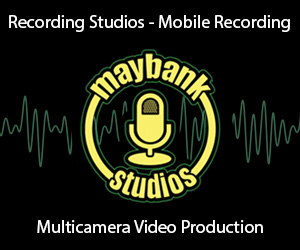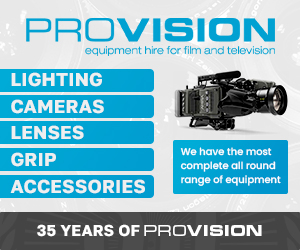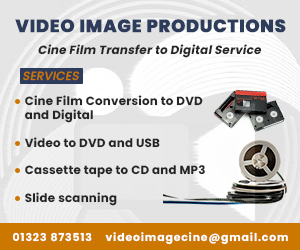Broadcast News
02/03/2009
Fibre Optics... The Past, Present And Future - Claratech Group

Although there were some discoveries in the late 19th century that were related to light and its propagation though a medium, it was not until the latter half of the 20th century when technological breakthroughs occurred which has led to modern day fibre optics.
It was the development of the Fiberscope during the 1950s, becoming the first image-transmitting device, that started the phenomenal rate of progress since then. It was in 1956 that the term 'Fibre Optics' was first used. However, the first all-glass fibres that were developed had limited transmission distances due to excessive optical losses.
The next major development that has led to the successful use of this technology was that of the laser, as this was the only means of producing a powerful light source with a spot small enough to be used in fibre optics. It was not until 1962 that the first semiconductor lasers were realised, these early devices are the basis of today's technology.
The development of fibre optic technology was initially grasped by the communications industry as the capability light has at being able to transmit information thousands of times higher than that of radio frequencies was recognised.
However, the laster was deemed unsuitable for use in free air due to the many losses due to the environmental factors such as rain. In 1966, the Standard Telecommunications Laboratory in England proposed that optical fibres could be used as a transmission medium for the laser providing that the attenuation of the fibre was no more than 20dB per km. At that time, the current losses were nearer to 1000 dB per km, and so research began into developing low loss fibres. In 1970 Corning succeeded in producing a fibre with losses less than the required 20dB per km. This was the birth of modern day fibre optic systems.
It was the military market that made the first real use of fibre optic systems in the early 1970s for use in communications and tactical systems. Commercial applications started to appear in 1977 with installations by AT&T and GTE.
The first broadcast application of a fibre optic system was at the Lake Placid Winter Olympics in 1980 and was originally installed as a backup transmission system for video feeds. Even though these early systems were quite primitive, the feeds were quickly used as the primary source due to the quality and reliability making this the first fibre optic transmission for television. Following on from then, in 1984 at the Lillehammer Winter Olympics, fibre optics were used to transmit the first digital video signal and this is the basis for today's applications even though the technology has evolved considerably since then.
The main disadvantage of fibre optics for use in broadcast is that of cost. Generally, there is not much difference in the raw cost of the fibre versus standard copper cables, however the cost of the connectors, terminations and end equipment makes these systems more expensive.
Nevertheless, where long distances are required beyond that of copper systems, for example some outside broadcast applications, then there is no real alternative . If more than one baseband signal can be applied to a single fibre then the cost can actually be lower.
Many products today use Time Division Multiplexing (TDM) of lower data rate signals such as audio, intercom, serial data, GPIO. An example of such a product is the CTP1xxx series from Claratech. This type of product multiplexes an array of signals on to one wavelength of light typically 1310nm or 1550nm. As the cost of laser semiconductors has decreased and their data rates have increased, more channels can be multiplexed within a single data stream and these units have an effective data transmission rate of about 1Gb/s allowing up to 256 audio channels, sampled at 96kb/s, to be transmitted across a single fibre.
Video signals on the other hand have a much higher data rate to start with so Time Division Multiplexing options are more limited. However, since these rates are higher, particularly for high definition, the transmission distances achievable are limited to 200 metres. For the emerging 1080p 3Gb/s standard distances are restricted to only 100 metres. Various products are availalbe such as the Claratech CTP2100 series rack units and CTP3100 Series openGear compatible cards.
An important aspect of any fibre optic system is that of reliability and signal integrity. It is advisable to always choose a system that has advanced diagnostics and monitoring to minimise any downtime. Although fibre optic systems are reliable, in general the lasers degrade over a period of time with the reduction output power efficiency. The video transmission systems from Claratech, monitor many parameters. They can be programmed to send out an email via the network or a GPI alarm if the optical system efficiency falls below an acceptable level, or any other onboard supply or signal falls outside limits.
This allows any potential failure to be addressed before a catastrophic event occurs, thus maximising uptime and assisting in any preventative maintenance programs. In addition to this, redundancy is a key issue. Fibre optic systems allow two simultaneous transmissions and automatic detection and selection at the receiver to ensure that any cable faults are protected. This is particularly important if multiple signals are transmitted on a single fibre.
As this technology advances further and the demands from broadcasters increases there will be more channels transmitted across fibre optics links. In terms of time division multiplexing products, 10Gb/s is becoming commercially viable and such systems would achieve at least 2048 audio channels per link.
There have also been advances in the development of lasers such that multiple wavelengths are available. This allows multiple wavelength of light to be transmitted on to one fibre. This Wavev Division Multiplexing (WDM will allow multiple channel of high bit rate signals such as 1080p 3Gb/s video streams to be transmitted across a single fibre. Currently up to 16 channels can be simultaneously transmitted, however this is likely to increase as technology improves and costs reduce.
In summary, the use of fibre optics within the broadcast industry has been growing at a steady pace but due to the extra demands now placed on content creation, in terms of quality and distance of locations, the use of fibre optics is becoming a mandatory requirement.
(KMcA/BMcC)
It was the development of the Fiberscope during the 1950s, becoming the first image-transmitting device, that started the phenomenal rate of progress since then. It was in 1956 that the term 'Fibre Optics' was first used. However, the first all-glass fibres that were developed had limited transmission distances due to excessive optical losses.
The next major development that has led to the successful use of this technology was that of the laser, as this was the only means of producing a powerful light source with a spot small enough to be used in fibre optics. It was not until 1962 that the first semiconductor lasers were realised, these early devices are the basis of today's technology.
The development of fibre optic technology was initially grasped by the communications industry as the capability light has at being able to transmit information thousands of times higher than that of radio frequencies was recognised.
However, the laster was deemed unsuitable for use in free air due to the many losses due to the environmental factors such as rain. In 1966, the Standard Telecommunications Laboratory in England proposed that optical fibres could be used as a transmission medium for the laser providing that the attenuation of the fibre was no more than 20dB per km. At that time, the current losses were nearer to 1000 dB per km, and so research began into developing low loss fibres. In 1970 Corning succeeded in producing a fibre with losses less than the required 20dB per km. This was the birth of modern day fibre optic systems.
It was the military market that made the first real use of fibre optic systems in the early 1970s for use in communications and tactical systems. Commercial applications started to appear in 1977 with installations by AT&T and GTE.
The first broadcast application of a fibre optic system was at the Lake Placid Winter Olympics in 1980 and was originally installed as a backup transmission system for video feeds. Even though these early systems were quite primitive, the feeds were quickly used as the primary source due to the quality and reliability making this the first fibre optic transmission for television. Following on from then, in 1984 at the Lillehammer Winter Olympics, fibre optics were used to transmit the first digital video signal and this is the basis for today's applications even though the technology has evolved considerably since then.
The main disadvantage of fibre optics for use in broadcast is that of cost. Generally, there is not much difference in the raw cost of the fibre versus standard copper cables, however the cost of the connectors, terminations and end equipment makes these systems more expensive.
Nevertheless, where long distances are required beyond that of copper systems, for example some outside broadcast applications, then there is no real alternative . If more than one baseband signal can be applied to a single fibre then the cost can actually be lower.
Many products today use Time Division Multiplexing (TDM) of lower data rate signals such as audio, intercom, serial data, GPIO. An example of such a product is the CTP1xxx series from Claratech. This type of product multiplexes an array of signals on to one wavelength of light typically 1310nm or 1550nm. As the cost of laser semiconductors has decreased and their data rates have increased, more channels can be multiplexed within a single data stream and these units have an effective data transmission rate of about 1Gb/s allowing up to 256 audio channels, sampled at 96kb/s, to be transmitted across a single fibre.
Video signals on the other hand have a much higher data rate to start with so Time Division Multiplexing options are more limited. However, since these rates are higher, particularly for high definition, the transmission distances achievable are limited to 200 metres. For the emerging 1080p 3Gb/s standard distances are restricted to only 100 metres. Various products are availalbe such as the Claratech CTP2100 series rack units and CTP3100 Series openGear compatible cards.
An important aspect of any fibre optic system is that of reliability and signal integrity. It is advisable to always choose a system that has advanced diagnostics and monitoring to minimise any downtime. Although fibre optic systems are reliable, in general the lasers degrade over a period of time with the reduction output power efficiency. The video transmission systems from Claratech, monitor many parameters. They can be programmed to send out an email via the network or a GPI alarm if the optical system efficiency falls below an acceptable level, or any other onboard supply or signal falls outside limits.
This allows any potential failure to be addressed before a catastrophic event occurs, thus maximising uptime and assisting in any preventative maintenance programs. In addition to this, redundancy is a key issue. Fibre optic systems allow two simultaneous transmissions and automatic detection and selection at the receiver to ensure that any cable faults are protected. This is particularly important if multiple signals are transmitted on a single fibre.
As this technology advances further and the demands from broadcasters increases there will be more channels transmitted across fibre optics links. In terms of time division multiplexing products, 10Gb/s is becoming commercially viable and such systems would achieve at least 2048 audio channels per link.
There have also been advances in the development of lasers such that multiple wavelengths are available. This allows multiple wavelength of light to be transmitted on to one fibre. This Wavev Division Multiplexing (WDM will allow multiple channel of high bit rate signals such as 1080p 3Gb/s video streams to be transmitted across a single fibre. Currently up to 16 channels can be simultaneously transmitted, however this is likely to increase as technology improves and costs reduce.
In summary, the use of fibre optics within the broadcast industry has been growing at a steady pace but due to the extra demands now placed on content creation, in terms of quality and distance of locations, the use of fibre optics is becoming a mandatory requirement.
(KMcA/BMcC)
Top Related Stories
Click here for the latest broadcast news stories.
15/08/2014
Fibre Optics In The Broadcast Industry
Over the last few decades there has been a revolution in the transmission of information with the development of fibre optical technology, writes B. M
Fibre Optics In The Broadcast Industry
Over the last few decades there has been a revolution in the transmission of information with the development of fibre optical technology, writes B. M
14/12/2010
The GefenPRO 3G SDI Fibre Optics Extender Is Launched
The new GefenPRO 3G SDI Fibre Optics Extender offers a long-range method of extending any 3G SDI source, far exceeding previous distance limitations.
The GefenPRO 3G SDI Fibre Optics Extender Is Launched
The new GefenPRO 3G SDI Fibre Optics Extender offers a long-range method of extending any 3G SDI source, far exceeding previous distance limitations.
23/07/2003
Vistek to demonstrate fibre optics at IBC
Vistek's extensive range of Fibre Optic products will form the centrepiece of their demonstrations at this year's IBC. Many broadcasters are recognisi
Vistek to demonstrate fibre optics at IBC
Vistek's extensive range of Fibre Optic products will form the centrepiece of their demonstrations at this year's IBC. Many broadcasters are recognisi
03/12/2010
Telecast Fibre Systems And Inertia Announced Partnership on World Series
Inertia Unlimited's exclusive X-Mo camera and Telecast Fibre Systems' Copperhead 3400 camera-mounted fibre optic transceiver teamed up to offer unprec
Telecast Fibre Systems And Inertia Announced Partnership on World Series
Inertia Unlimited's exclusive X-Mo camera and Telecast Fibre Systems' Copperhead 3400 camera-mounted fibre optic transceiver teamed up to offer unprec
25/04/2003
Boxer Systems install fibre channel network for MPC
Boxer Systems have installed a RIO controller from Chaparral into Soho's Moving Picture Company (MPC). As part of a new Digital Lab based around Quant
Boxer Systems install fibre channel network for MPC
Boxer Systems have installed a RIO controller from Chaparral into Soho's Moving Picture Company (MPC). As part of a new Digital Lab based around Quant
12/12/2016
Canford Launches Fibre Termination Service
Canford is celebrating reaching the impressive milestone of completing its 40th year in business, an achievement made possible through continuously ev
Canford Launches Fibre Termination Service
Canford is celebrating reaching the impressive milestone of completing its 40th year in business, an achievement made possible through continuously ev
25/08/2005
Telecast unveils new SG5070 fibre optic HD/SDI multiformat signal generator
The new SG5070 SDI-HD/SDI video signal generator, introduced by Telecast Fiber Systems, provides broadcasters with a convenient and affordable alterna
Telecast unveils new SG5070 fibre optic HD/SDI multiformat signal generator
The new SG5070 SDI-HD/SDI video signal generator, introduced by Telecast Fiber Systems, provides broadcasters with a convenient and affordable alterna
30/01/2013
3M Introduces One Pass Fibre Pathway
3M, the diversified technology company, has launched its 3M One Pass Fibre Pathway range in the UK and Ireland. Addressing the growing demand for high
3M Introduces One Pass Fibre Pathway
3M, the diversified technology company, has launched its 3M One Pass Fibre Pathway range in the UK and Ireland. Addressing the growing demand for high
15/09/2003
Vistek launch expanded fibre optic range at IBC
Although several modular interface manufacturers can now offer some fibre optic interfaces, few can provide the range of products now being delivered
Vistek launch expanded fibre optic range at IBC
Although several modular interface manufacturers can now offer some fibre optic interfaces, few can provide the range of products now being delivered
05/01/2007
Stratos Optical Technologies Holds Fibre Workshop
Stratos Optical Technologies has held a Fibre Workshop for its growing number of broadcast customers. This was attended by key engineering staff from
Stratos Optical Technologies Holds Fibre Workshop
Stratos Optical Technologies has held a Fibre Workshop for its growing number of broadcast customers. This was attended by key engineering staff from
20/10/2009
Argosy Adds Winchester Electronics Products
A leading UK-based international supplier of HD broadcast cables and studio infrastructure products, Argosy, has announced that it has added the award
Argosy Adds Winchester Electronics Products
A leading UK-based international supplier of HD broadcast cables and studio infrastructure products, Argosy, has announced that it has added the award
13/03/2024
Harmonic To Display Solutions For High-Speed Fibre Broadband Service Delivery
Harmonic is to showcase its versatile solutions for high-speed fibre broadband service delivery at the FTTH Conference in Berlin. Harmonic's market-le
Harmonic To Display Solutions For High-Speed Fibre Broadband Service Delivery
Harmonic is to showcase its versatile solutions for high-speed fibre broadband service delivery at the FTTH Conference in Berlin. Harmonic's market-le
15/01/2024
DOCOMO PACIFIC Selects Harmonic's Fibre Access Solutions
Harmonic has announced that DOCOMO PACIFIC, a wholly owned subsidiary of NTT Japanese mobile operator NTT DOCOMO and the regional leader in innovation
DOCOMO PACIFIC Selects Harmonic's Fibre Access Solutions
Harmonic has announced that DOCOMO PACIFIC, a wholly owned subsidiary of NTT Japanese mobile operator NTT DOCOMO and the regional leader in innovation
16/02/2023
Globecast To Expand Its European Fibre Backbone
Globecast has announced that it is significantly expanding its European fibre backbone – part of the company's global fibre network GCBN – to 100G fro
Globecast To Expand Its European Fibre Backbone
Globecast has announced that it is significantly expanding its European fibre backbone – part of the company's global fibre network GCBN – to 100G fro
13/03/2020
DTS1800 Fibre System For Live Events
Digital Television Systems have over 25 years' experience in Camera Control Systems. No wonder the DTS1800 Fibre System is the preferred Multi Camera
DTS1800 Fibre System For Live Events
Digital Television Systems have over 25 years' experience in Camera Control Systems. No wonder the DTS1800 Fibre System is the preferred Multi Camera















